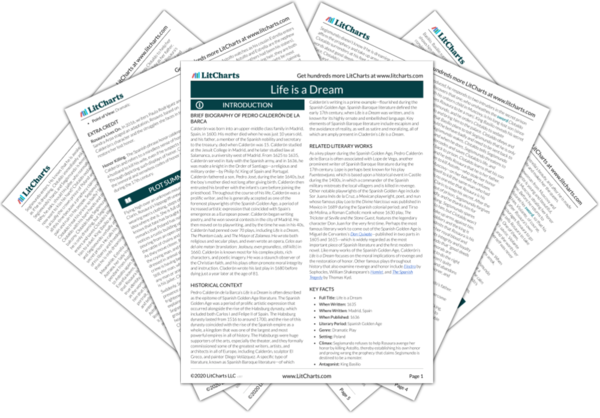Next
Summary
Life is a Dream Study Guide |
Next
Summary
|
Welcome to the LitCharts study guide on Pedro Calderón de la Barca's Life is a Dream. Created by the original team behind SparkNotes, LitCharts are the world's best literature guides.

Rosaura Lives On. In 2016, writers Paula Rodriguez and Sandra Arpa staged an adaptation, Rosaura, based on Calderón’s character and the struggles she faces in trying to restore her lost honor.
Honor Killing. The Spanish phrase honor calderonian began with Calderón and refers to a mindless sense of honor that can force a husband to kill his wife, even if he suspects she is innocent. Through depicting such displays of honor, Calderón condemns the immoral and senseless codes of honor that were popular during the 17th century.